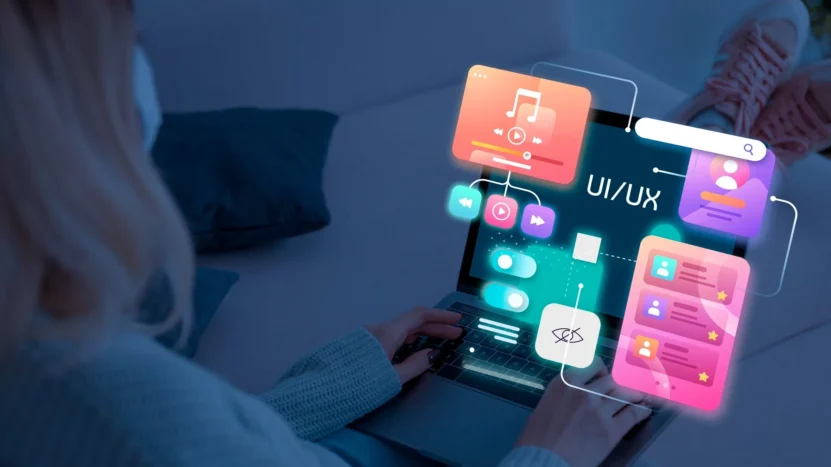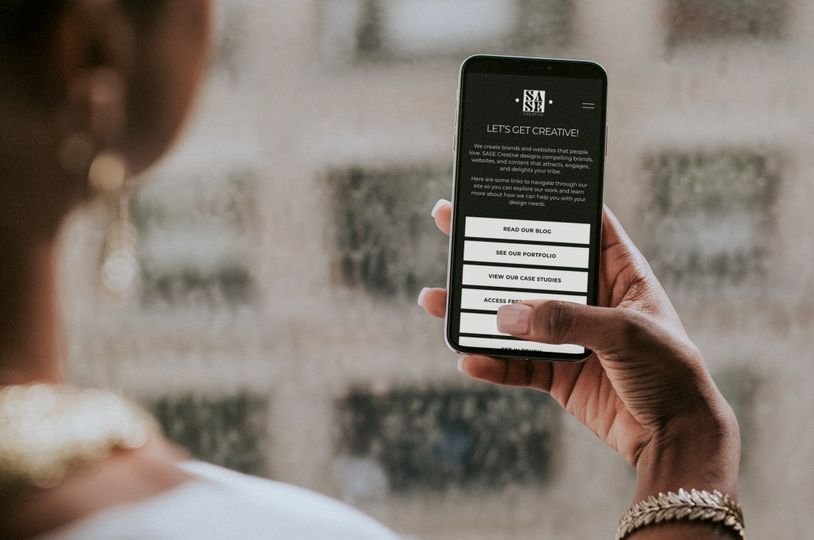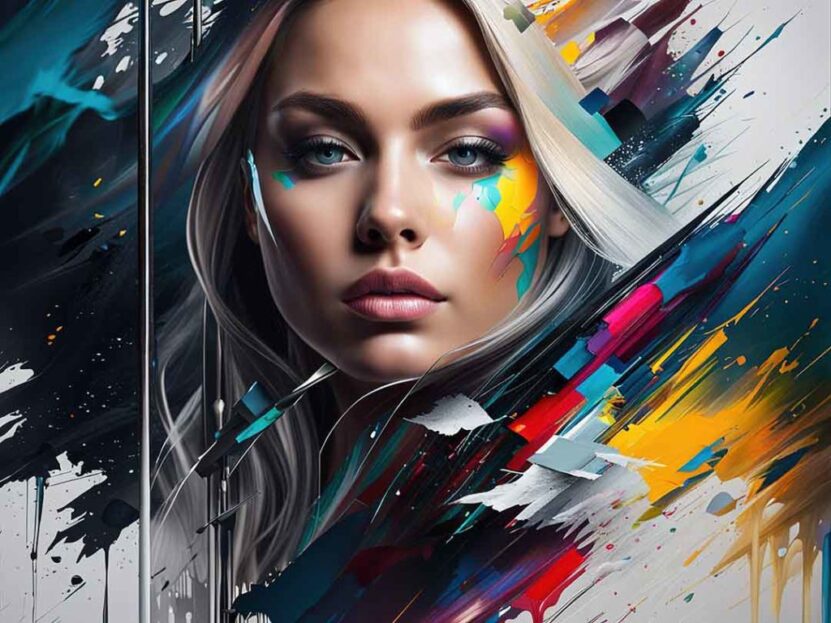In the vast realm of technology, where innovation and creativity intertwine seamlessly, one aspect continues to captivate audiences worldwide – creating eye-catching visuals. Crafting visually appealing graphics has become essential. As we progress through the era of digital technology, there is a growing need for innovative solutions and developments to assist us in effectively adapting to this new landscape. Skill in a world where screens and digital interfaces dominate. This thorough investigation will examine the dynamic nature of visual content production. It will uncover the tools, trends, and techniques that empower individuals to express their unique perspectives in the digital age.
The Visual Revolution

The era of digitalization has led to a significant surge in the requirement for visually attractive content.From social media platforms to websites and digital marketing campaigns, the power of striking visuals is unparalleled. It needs to be more than sufficient to convey messages through text alone; combining words and images has become the key to capturing audience attention in an increasingly competitive online environment.
The Rise of DIY Design
Gone are the days when design was confined to professionals armed with sophisticated software. The democratization of design tools has empowered individuals from all walks of life to unleash their creativity. Formal training is no longer a prerequisite for individuals to turn their creative ideas into reality in design.
Design Tools for All
One of the driving forces behind the democratization of design is the availability of user-friendly tools that cater to beginners and seasoned designers alike. Applications like Canva, Adobe Spark, and Figma have revolutionized the design landscape by providing intuitive interfaces and many templates. These tools break down the barriers to entry, allowing individuals to create stunning visuals without a steep learning curve.
Templates: A Canvas for Your Ideas
Templates have emerged as a game-changer in the world of design. These pre-designed layouts serve as a foundation for creativity, enabling individuals to transform a blank canvas into a masterpiece.
Templates are a great starting point for creating social media posts, presentations, or marketing materials. They inspire and accelerate the design process.
Infusing Personality into Designs

While templates offer a fantastic starting point, the true magic happens when individuals infuse their unique personality and style into their creations. Customization features allow users to tweak every design element, from color schemes to typography, ensuring that the final product truly reflects the creator’s vision.
Collaborative Design: A Symphony of Ideas
In the digital age, collaboration knows no bounds. Cloud-based design tools have allowed individuals to collaborate in real time, irrespective of geographical distances. This collaborative approach fosters creativity and brings diverse perspectives into the design process. The synergy of minds results in visuals that are aesthetically pleasing and resonate with a broader audience.
Riding the Wave of Trends
Design, like any other form of expression, evolves with time. Staying abreast of design trends is crucial for creating current and engaging visuals. From minimalist designs to bold color schemes, the trends in the digital design landscape are ever-changing. Keeping an eye on what’s popular can provide valuable insights and inspire fresh ideas for your creations.
The Power of Storytelling through Visuals
Beyond mere aesthetics, visuals have the incredible power to tell stories. Whether it’s a brand narrative, a personal journey, or a social cause, visuals can convey messages in a way that resonates deeply with the audience. Infographics, in particular, have become a popular medium for condensing complex information into visually digestible nuggets, making storytelling more impactful than ever.
The Mobile Design Revolution

As smartphones become an integral part of our daily lives, designing for mobile has become a priority. Responsive design, mobile-friendly layouts, and optimizing visuals for smaller screens are now essential considerations in digital design. Adapting to the mobile landscape ensures your creations reach and captivate audiences across diverse devices.
Overcoming Creative Blocks
In the journey of visual creation, creative blocks are inevitable. However, overcoming these hurdles is part of the artistic process. Experimenting with different design elements, taking breaks, and seeking inspiration from diverse sources can reignite the creative spark. Remember, the digital canvas is vast, and there’s always room for exploration and innovation.
Embracing Imperfections
In pursuing perfection, it’s easy to overlook the beauty of imperfections. Embracing your designs’ quirks and unique elements adds a human touch, making them more relatable and authentic. Remember that imperfections are not flaws but the creator’s fingerprints embedded in the artwork.
The Psychology of Color in Design
Color is a powerful tool in the hands of a designer. Each hue carries its own emotional weight, influencing how the audience perceives and interacts with visuals. Understanding the psychology of color allows designers to evoke specific emotions and create a more profound connection with the viewer. For example, warm tones like red and orange can convey energy and passion, while cool tones like blue and green may evoke calmness and trust. By strategically choosing colors, designers can enhance the impact of their visuals.
Accessibility in Design: Reaching a Wider Audience

In creating visually stunning content, it’s essential to consider accessibility. Designers play a crucial role in ensuring that their creations are inclusive and can be enjoyed by individuals with diverse abilities. This includes using legible fonts, providing sufficient color contrast, and optimizing designs for screen readers. By embracing accessibility principles, designers broaden their audience and contribute to a more inclusive digital landscape.
Future Trends: What Lies Ahead
The digital design landscape is ever-evolving, and staying ahead of the curve requires an awareness of emerging trends. Augmented reality (AR) and virtual reality (VR) are poised to revolutionize how we experience visual content, offering immersive and interactive possibilities. Artificial intelligence (AI) is also making its mark in design, with tools that can analyze data to inform design decisions and even generate visuals autonomously. As we look to the future, the intersection of technology and design promises exciting possibilities shaping how we create and consume visual content.
Conclusion: Your Digital Artistic Journey
In a world inundated with information, the ability to create visually compelling content is a superpower. The tools, trends, and techniques explored in this article merely scratch the surface of the vast landscape of digital design. Whether you’re a seasoned designer or a novice exploring this realm for the first time, the key lies in embracing the journey.
Create posters with a simple poster maker(click here to check it out), design social media graphics, or craft intricate infographics – the digital canvas is yours to explore. Unleash your creativity, experiment with new ideas, and let your unique voice be heard through the visuals you create. In the ever-evolving world of technology, crafting stunning visuals remains a timeless endeavor, inviting individuals to be both creators and curators of the digital aesthetic.

